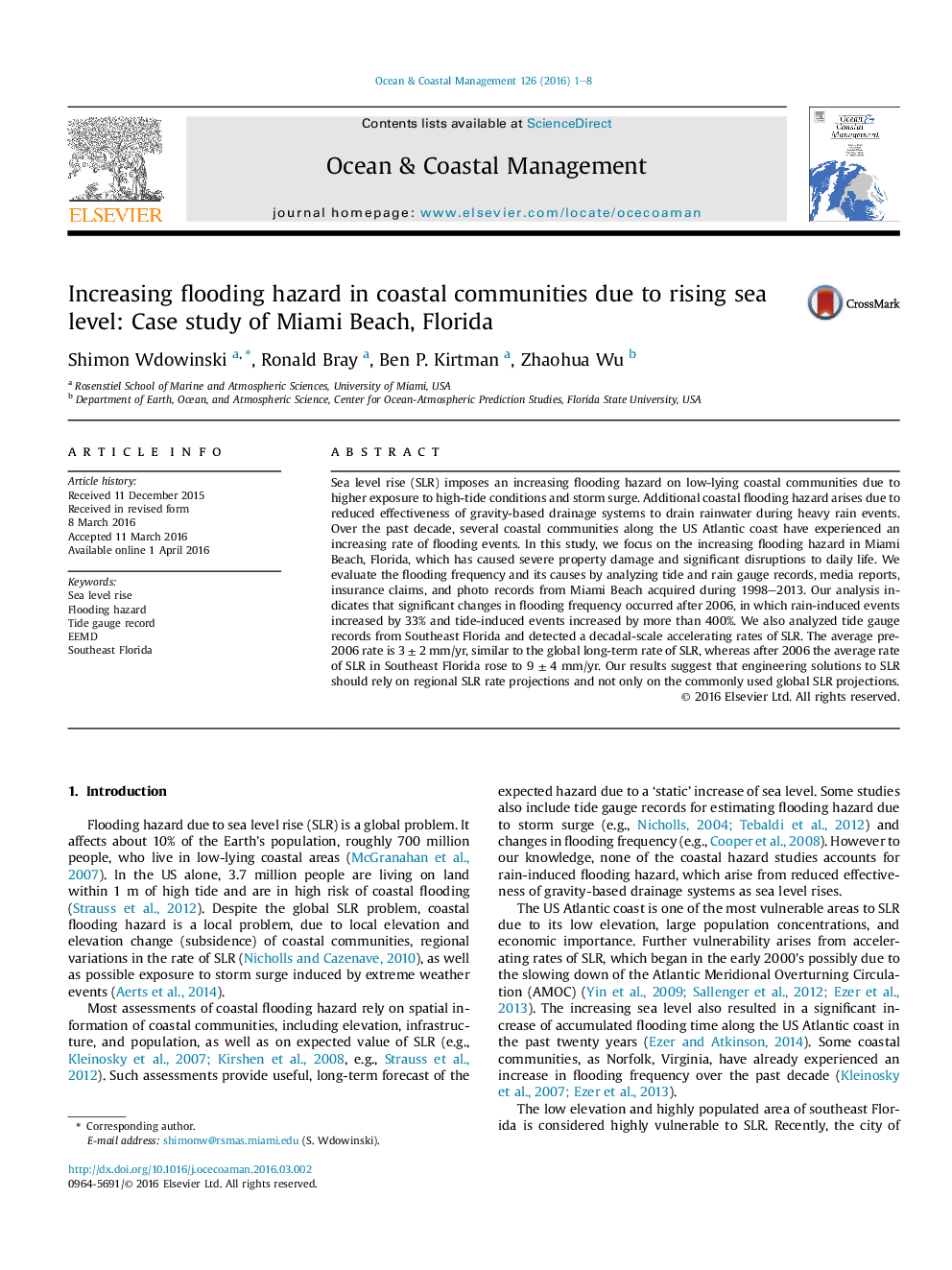| کد مقاله | کد نشریه | سال انتشار | مقاله انگلیسی | نسخه تمام متن |
|---|---|---|---|---|
| 1723334 | 1520503 | 2016 | 8 صفحه PDF | دانلود رایگان |
• Flooding frequency in Miami Beach increased significantly since 2006, mostly due to high tide events.
• The average rate of sea level rise in Southeast Florida increased from 3 ± 2 mm/yr prior to 2006 to 9 ± 4 mm/yr after 2006.
• Increasing sea level in the Miami area correlates with weakening of the entire Gulf Stream system (decrease in kinetic energy).
• Engineering solutions to SLR should rely on regional sea level rise rate projections and not only on the commonly used global SLR projections.
Sea level rise (SLR) imposes an increasing flooding hazard on low-lying coastal communities due to higher exposure to high-tide conditions and storm surge. Additional coastal flooding hazard arises due to reduced effectiveness of gravity-based drainage systems to drain rainwater during heavy rain events. Over the past decade, several coastal communities along the US Atlantic coast have experienced an increasing rate of flooding events. In this study, we focus on the increasing flooding hazard in Miami Beach, Florida, which has caused severe property damage and significant disruptions to daily life. We evaluate the flooding frequency and its causes by analyzing tide and rain gauge records, media reports, insurance claims, and photo records from Miami Beach acquired during 1998–2013. Our analysis indicates that significant changes in flooding frequency occurred after 2006, in which rain-induced events increased by 33% and tide-induced events increased by more than 400%. We also analyzed tide gauge records from Southeast Florida and detected a decadal-scale accelerating rates of SLR. The average pre-2006 rate is 3 ± 2 mm/yr, similar to the global long-term rate of SLR, whereas after 2006 the average rate of SLR in Southeast Florida rose to 9 ± 4 mm/yr. Our results suggest that engineering solutions to SLR should rely on regional SLR rate projections and not only on the commonly used global SLR projections.
Journal: Ocean & Coastal Management - Volume 126, June 2016, Pages 1–8
